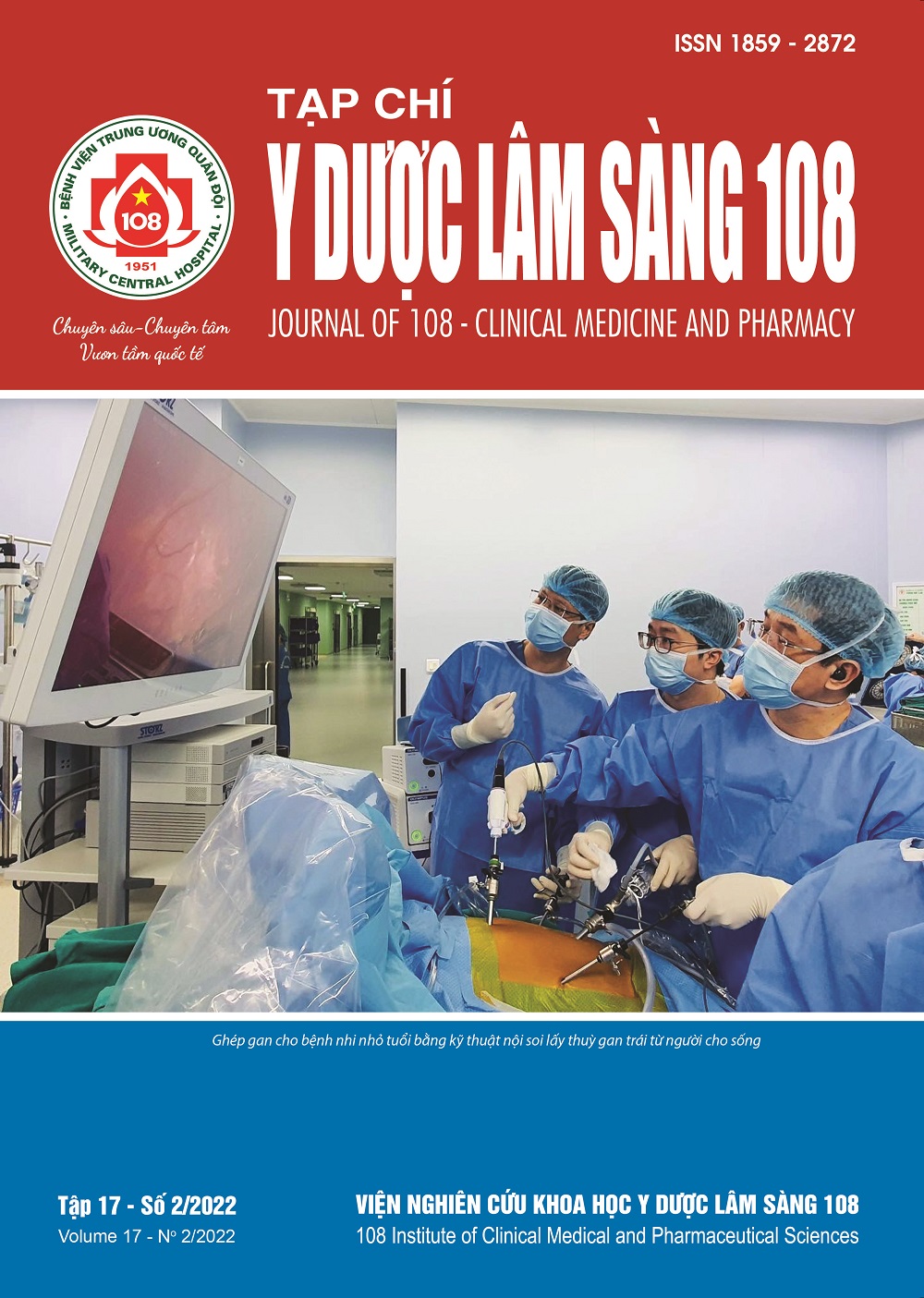Total correction for Taussig-Bing anomaly with aortic arch anomalies: Intermediate outcomes from Vietnam National Children’s Hospital
Main Article Content
Keywords
Abstract
Objective: To evaluate the intermediate outcomes of total correction for Taussig-Bing anomaly combined with aortic arch anomalies at Vietnam National Children’s Hospital. Subject and method: From 2010 to 2018, we retrospectively reviewed all patients who underwent arterial switch operation combined with aortic reconstruction for the Taussig-Bing anomaly at Vietnam National Children’s Hospital. Result: There were 36 patients was collected to this study. The mean operative age was 63 ± 55 (7 - 237) days and the mean weight at the operation was 3.8 ± 0.9 (2.5 - 6.3) kg. 35 patients (97%) undergone single stage repair with arterial switch operation combined with aortic arch reconstruction through the median sternotomy approach and 1 patient underwent staged repair with a previous coarctation repair through the left thoracotomy and the arterial switch operation was performed 2 weeks later. The aortic cross-clamp time was 172 ± 27 (132 - 272) minutes and the selective cerebral perfusion time for arch repair was 34 ± 13 (17 - 65) minutes. The hospital stay from the operation to discharge was 28 ± 52 (13 - 321) days. There were 7 hospital deaths and no late deaths at the latest follow-up. 2 patients required reoperation due to right ventricular outflow tract obstruction. The overall survival was 80.6% and the freedom of re-intervention or re-operation was 90% at the mean follow-up of 34.2 ± 33.4 (1 - 107) months. Conclusion: The arterial switch operation, ventricular septal defect closure, and concomitant arch repair for Taussig-Bing anomaly combined with aortic arch anomalies could be achieved with the satisfactory outcomes. Standardization of surgical skill and ICU protocols improve the quality of care for this complexe heart defects group.
Article Details
References
2. Walters HL, Mavroudis C, Tchervenkov CI et al (2000) Congenital heart surgery nomenclature and database project: Double outlet right ventricle. Ann Thorac Surg 69(3): 249-263.
3. Soszyn N, Fricke TA, Wheaton GR et al (2011) Outcomes of the arterial switch operation in patients with Taussig-Bing Anomaly. Ann Thorac Surg 92(2): 673-679.
4. Alsoufi B, Cai S, Williams WG et al (2008) Improved results with single-stage total correction of Taussig-Bing anomaly. Eur J Cardiothorac Surg 33(2): 244-250.
5. Wetter J, Sinzobahamvya N, Blaschczok HC et al (2004) Results of arterial switch operation for primary total correction of the Taussig-Bing anomaly. Ann Thorac Surg 77(1): 41-46.
6. Luo K, Zheng J, Wang S et al (2017) Single-stage correction for Taussig-Bing anomaly associated with aortic arch obstruction. Pediatr Cardiol 38(8): 1548-1555.
7. Comas J, Mignosa C, Cochrane A et al (1996) Taussig-Bing anomaly and arterial switch: Aortic arch obstruction does not influence outcome. Eur J Cardiothorac Surg 10(12): 1114-1119.
8. Masuda M, Kado H, Shiokawa Y et al (1999) Clinical results of arterial switch operation for double-outlet right ventricle with subpulmonary VSD. Eur J Cardiothorac Surg 15(3): 283-288.
9. Bokenkamp R, Aguilar E, van der Palen RLF et al (2016) Reoperation for right ventricular outflow tract obstruction after arterial switch operation for transposition of the great arteries and aortic arch obstruction. Eur J Cardiothorac Surg 49(5): 91-96.
 ISSN: 1859 - 2872
ISSN: 1859 - 2872
